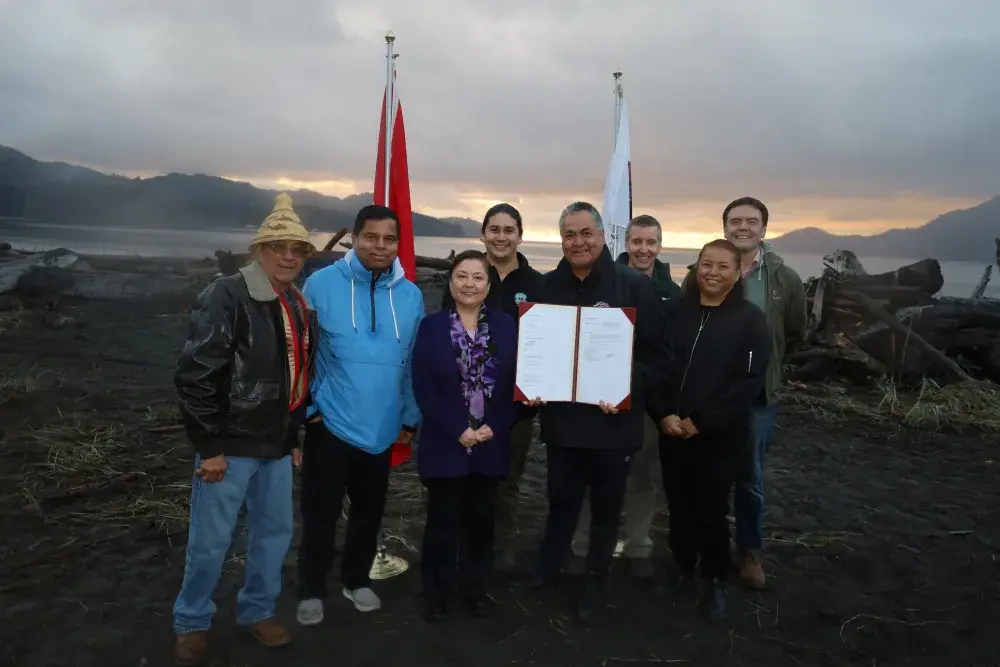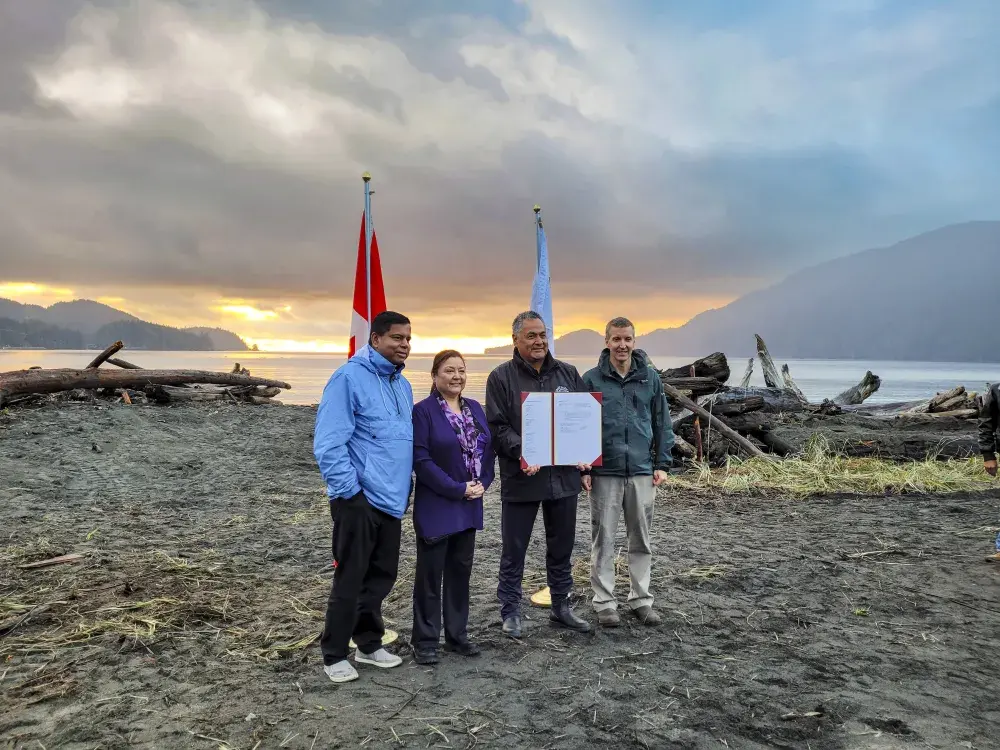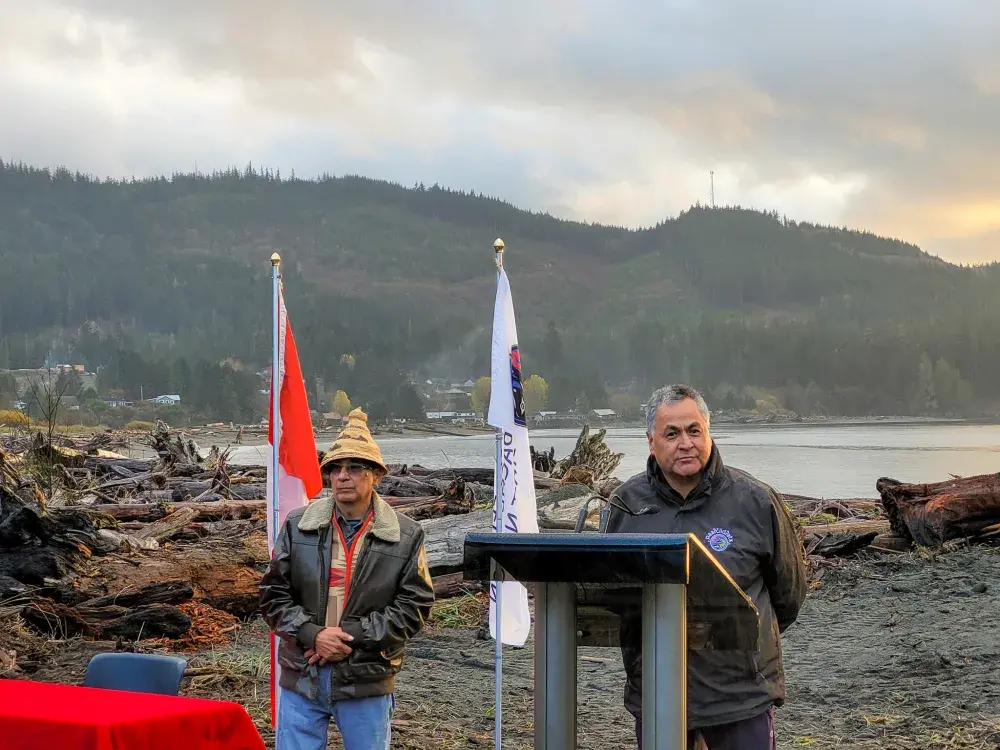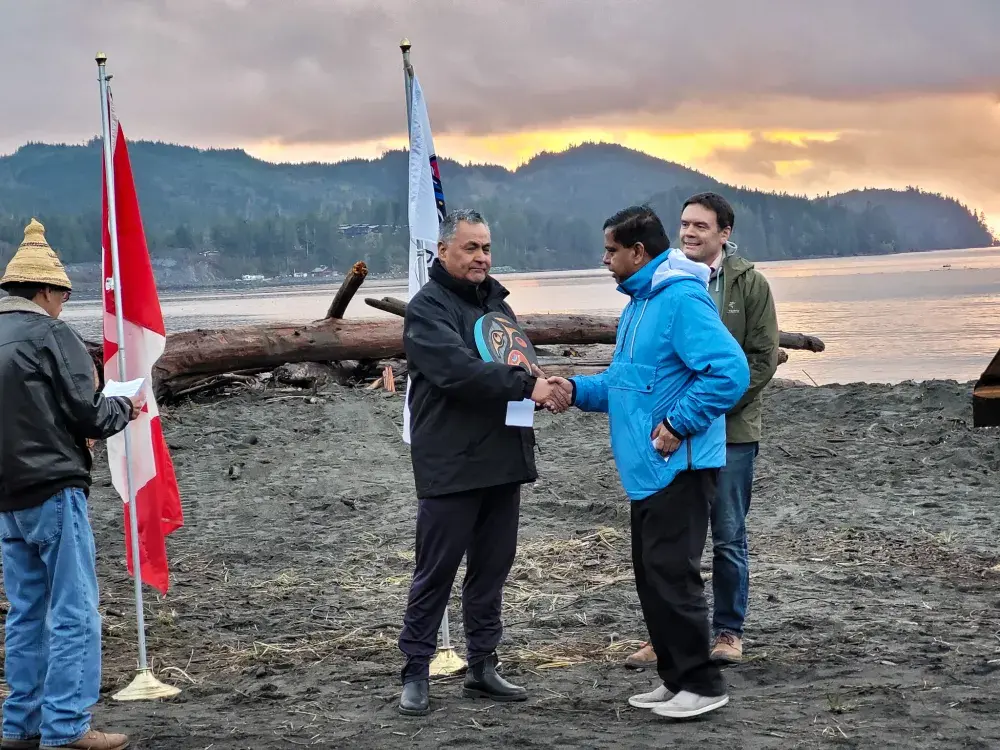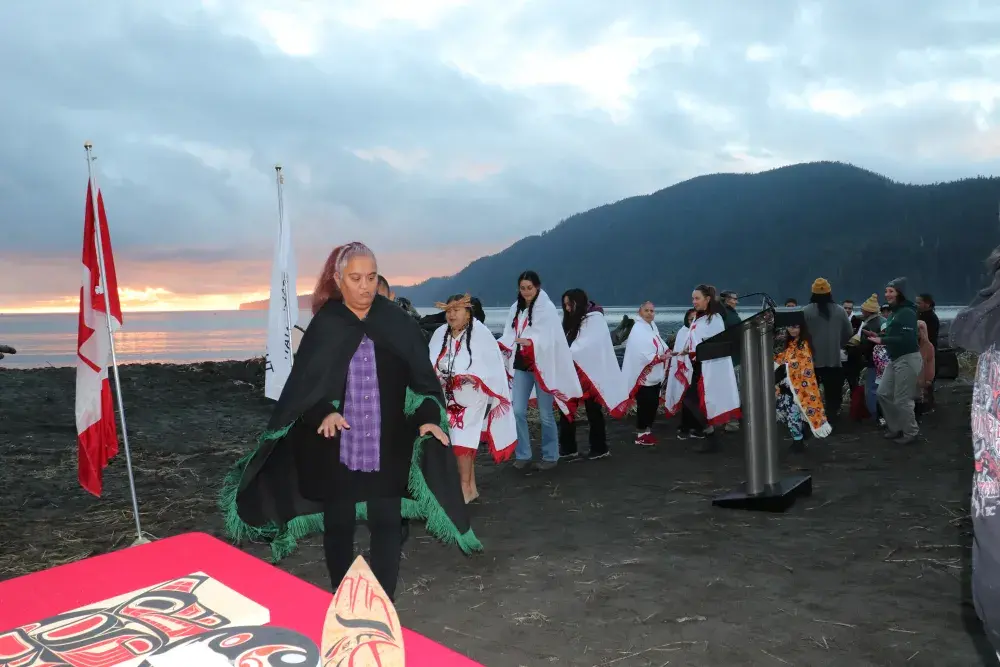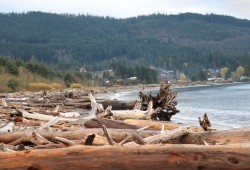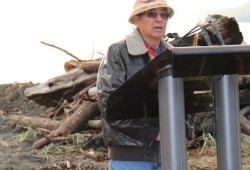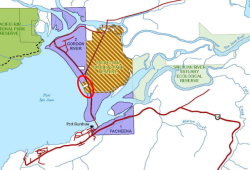“It’s a small step, but it’s a step in the right direction,” says Pacheedaht elected chief Jeff Jones.
He said those words at a signing ceremony held at ʔA:ʔbʔe:ʔs (Aah-bee-ay-s), the Middle Beach section of Pacheedaht Beach on Nov. 15.
For as long as anyone can remember, Pacheedaht stunning two-kilometre sandy beach has been bisected by a parcel of land that the government of Canada excluded from the First Nation’s two main reserves, located on each end of the beach. The nation has operated a campground on its reserve portions of the beach for decades, but the middle section of the beach was off limits to them.
In 1970, the federal government established Pacific Rim National Park Reserve, which runs 125 kilometres along the west coast of Vancouver Island from Tofino in the north to Port Renfrew in the south. It runs through the territories of nine Nuu-chah-nulth nations. By 1988 Middle Beach was included in the federal park reserve, to be managed by Parks Canada without consultation and consent of Pacheedaht First Nation.
According to Chief Jones, there hasn’t been much in the way of management at Middle Beach.
“There are no services and no facilities,” he said.
But that all changed on Nov. 15, when Gary Anandasangaree, minister of Crown-Indigenous Relations, joined Parks Canada officials and leaders of the Pacheedaht and Ditidaht First Nations to sign a License of Occupation on the 2.6-acre parcel of land that includes Middle Beach.
Chief Jones said that Pacheedaht was not included in land use decisions when it came to Middle Beach and their elders and chiefs always wanted it back in their possession. In fact, during his years as Pacheedaht’s treaty negotiator, the late Marvin McClurg pressed for the return of the beach to the Pacheedaht.
According to a 2009 Parks Canada ‘State of the Park’ report, the federal agency was engaged in negotiations at five separate Nuu-chah-nulth treaty tables whose lands are taken up by the Pacific Rim National Park Reserve. This included the Maa-nulth (Huu-ay-aht, Ucluelet, and Toquaht First Nations), Hupacasath, Ditidaht, Pacheedaht, Tseshaht and Tla-o-qui-aht First Nations.
Some nations signed co-operative management agreements with Parks Canada.
While the agreement does not give Pacheedaht ownership of the beach, it is a step towards reconciliation. It is anticipated that Middle Beach will be included in treaty settlement lands when Pacheedaht and Ditidaht sign a final agreement. Jones estimated that it could be two to five years before they have a final treaty.
Dozens of people gathered at Middle Beach just before sunset to witness the signing ceremony. Adults huddled under portable canopies while children frolicked on the beach.
“Part of our territory is coming back to us,” Jones said, calling the section of beach the missing link.
He said Pacheedaht is moving towards ownership of their land.
“The cultures and identities of Indigenous Peoples are rooted in ties with the land,” said Minister Anandasangaree in a written statement. “For more than a hundred years, the government stole land and severed these ties. Today, with the signing of this agreement, we begin to reverse this act of violence as the stewardship of the land at ʔA:ʔbʔe:ʔs is given back to Pacheedaht First Nation.”
“Our nation has not owned land for many years and we’re very excited about finding out what ownership feels like,” said Jones. “We will get our Pacheedaht people involved the management. Our territory is very beautiful, and many visitors come here just to get away.”
Jones sees this as a tourism opportunity that will create long-term employment.
With the West Coast Trail seeing 8,000 hikers every year and the nearby Juan de Fuca trail’s 120,000 annual visitors, the tourism potential is obvious. Jones says the community needs to develop a plan that may include linking the two ends of the beach with additional campground sites and services. He said the agreement will not only benefit the Pacheedaht but also the neighboring Port Renfrew community and visiting tourists.
“This is a change in custodianship and will likely lead to a full land transfer in treaty and will be managed under the full control of Pacheedaht First Nation,” said Minister Anandasangaree.
Jones said the transfer is symbolic, but it is a sign of what is ahead.
“This is about the future for our young people and we’re on the right path toward reconciliation and treaty,” he added.
Pacheedaht along with Ditidaht First Nation has been in the B.C. treaty process for 27 years.

